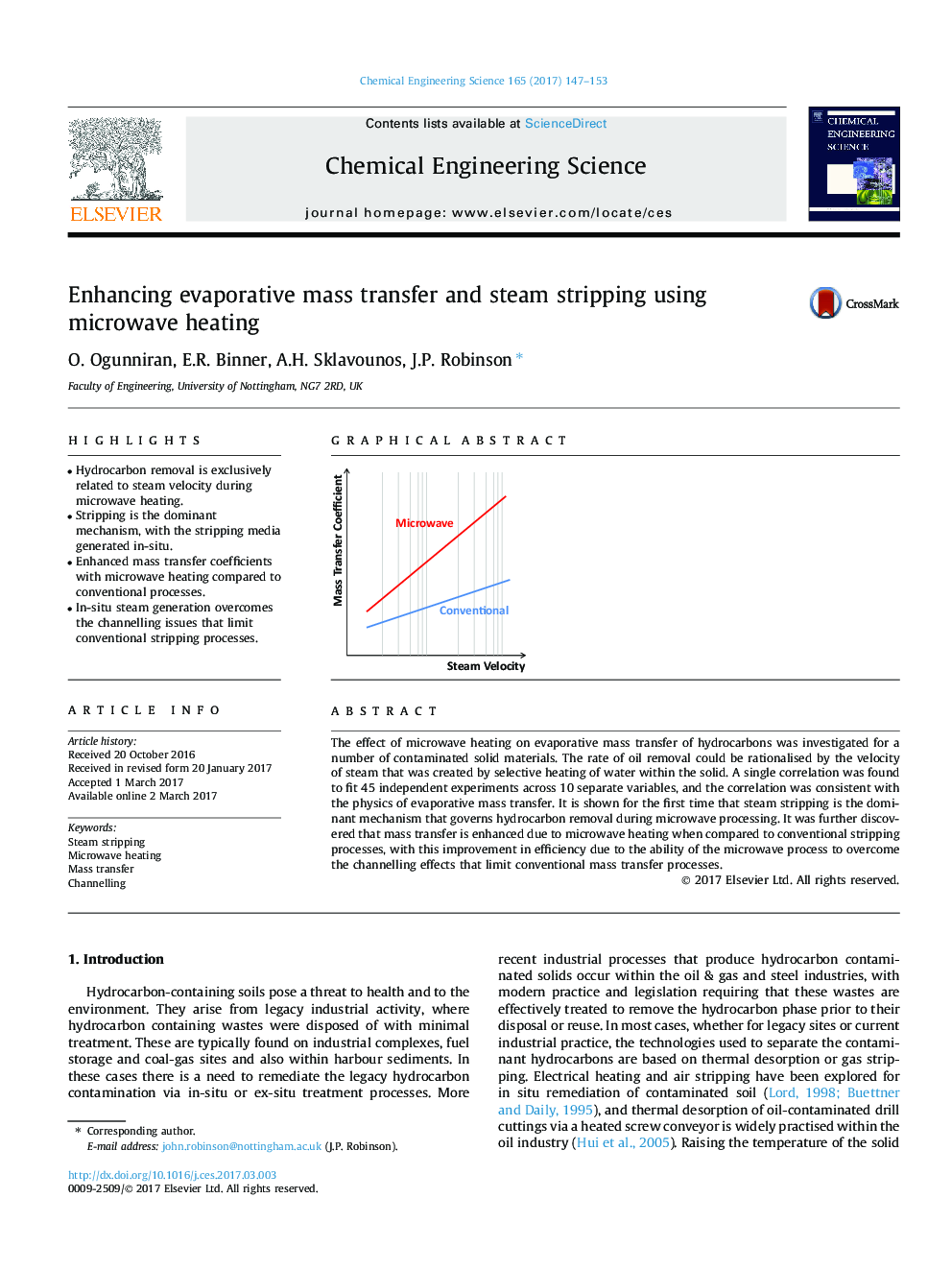| Article ID | Journal | Published Year | Pages | File Type |
|---|---|---|---|---|
| 6467469 | Chemical Engineering Science | 2017 | 7 Pages |
â¢Hydrocarbon removal is exclusively related to steam velocity during microwave heating.â¢Stripping is the dominant mechanism, with the stripping media generated in-situ.â¢Enhanced mass transfer coefficients with microwave heating compared to conventional processes.â¢In-situ steam generation overcomes the channelling issues that limit conventional stripping processes.
The effect of microwave heating on evaporative mass transfer of hydrocarbons was investigated for a number of contaminated solid materials. The rate of oil removal could be rationalised by the velocity of steam that was created by selective heating of water within the solid. A single correlation was found to fit 45 independent experiments across 10 separate variables, and the correlation was consistent with the physics of evaporative mass transfer. It is shown for the first time that steam stripping is the dominant mechanism that governs hydrocarbon removal during microwave processing. It was further discovered that mass transfer is enhanced due to microwave heating when compared to conventional stripping processes, with this improvement in efficiency due to the ability of the microwave process to overcome the channelling effects that limit conventional mass transfer processes.
Graphical abstractDownload high-res image (86KB)Download full-size image
